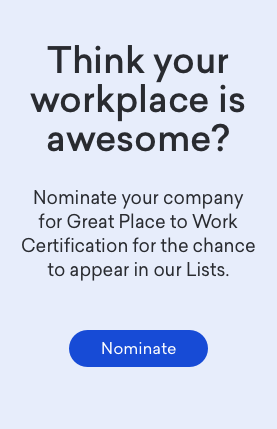Work/Life Balance in the Workplace
The Atlantic’s headline “Why Women Still Can’t Have It All” has launched a new generational debate as Anne-Marie Slaughter attempts to crack the work v. family conundrum. After leaving her prestigious position as director of policy planning at the State Department, Slaughter concluded that despite the progress made in opening doors for women in the workforce, women still face the dilemma that they cannot have it all. That is to say that they cannot fully commit to a successful professional career and “happily” fulfill their motherhood. Slaughter recommends that women in leadership positions cease telling young woman that they “can have it all and do it all.”
I would argue that this is simply not the battle one ought to be fighting. Yes, it has been a challenge for women to make their mark but it has also been shown that women can successfully have it all (depending on your definition of the term) and achieve work/life balance. And, yes, on the contrary, this should continue to be an aspiration to strive for fearlessly. We must face the greater picture: what must be adjusted is not the motto, it is the workplace.
If we shift the core of this debate to the workplace then this is where the call to action ought to be. For more than 25 years, Great Place to Work Institute has been working within organizations to create and sustain exceptional workplaces where employees are positively engaged in an environment driven by policies and practices that speak to the employees’ and company’s values. These are environments where work/life balance is supported, if not encouraged. While Slaughter correctly identifies some of the positive organizational outcomes that come from creating such an environment, I know the benefits go deeper than she outlines. Great Place to Work has been promoting these benefits for years, which include higher retention, higher productivity, higher levels of creativity and innovation as well as overall better financial performance, to name a few.
While we’re shifting the debate, I would also contend that this is no longer a gendered issue. As technology continues to change the landscape of the workplace, both women and men equally struggle to achieve a work/life balance. Sure, there was a time when this was an issue between the sexes but today we are entering a new era where the separation between work and personal life is increasingly blurred. No longer a physical place where people go every day from nine to five, the workplace is only as far as our cell phones and our computers. Knowing this, workplaces must foster a culture where policies are flexible and meet the needs of their people.
The power of open dialogue - Slaughter admits that hers is a point of view of a highly-educated, upper class woman with the highest level of flexibility in the workplace. I maintain that we should really be concerned with single-parents and low-income families who do not have the flexibility that Slaughter enjoyed. Again, creating the right workplace environment is where the solution lies. Sally Quinn at the Washington Post responded to the Slaughter essay questioning the idea of choice– that it is up to women to get what they need. Change does not need to involve “moaning” and “whining” about what can or cannot be had but rather it is about what we want. In our day-to-day work, Great Place to Work knows that the best companies (both large and small) regularly and proactively ask their employees what they want. This feedback informs the company’s policies and ensures that they align with the needs of their employees. I urge company leaders to open that dialogue with their people to learn about their needs.
Building strong women and role models- Perhaps the biggest bone of contention I have with Slaughter’s proposal is with her recommendation to replace the “you can have it all” speech with a more realistic, somber discourse. I strongly suggest we do not kill the motto. On the contrary! I believe that this motto not only holds true, it is needed to keep further generations motivated and inspired to strive further. With only about 5% of women leaders in Top Fortune 100 companies, we need to continue to encourage women to persevere and make their mark in positions of power.
To this end, I urge senior leaders to empower themselves and their people by creating an open dialogue that will inform their policies and enable a world where Woman and Men Can Have it All.
Interested in opening up a dialogue with your employees? We can show you how.
Great Place to Work® is the only global consulting and training firm immersed in what makes workplaces exceptional. Our tools and expertise help organizations create and sustain great workplace cultures.
Built on 25 years of research, the Great Place to Work Trust Index© Employee Survey is taken by millions of employees in 40 countries annually. The most respected companies worldwide apply our Model® to increase the levels of trust across their organizations and drive business results.
Susan Lucas-Conwell is Chief Executive Officer and Board Member at Great Place to Work®. An accomplished business leader, Susan provides keen perspective on how building and maintaining great workplace culture drives business success.











